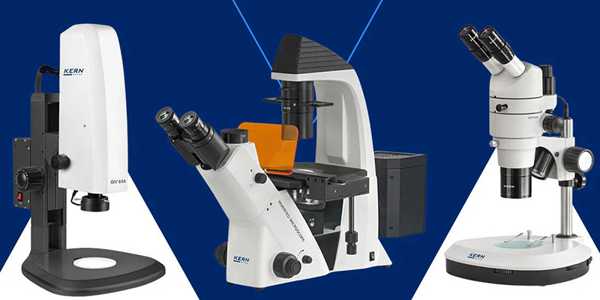- Electronics & Tech News
The Future of E-Ink Technology in Personal Devices
E-ink technology, once synonymous with simple black-and-white e-readers, is dramatically evolving. From its humble beginnings, this display technology is poised to redefine the landscape of personal devices, offering a unique blend of readability, energy efficiency, and visual appeal.
The Evolution of E-Ink Personal Devices
Over the past decade, e-ink devices have primarily been associated with e-readers. These devices capitalized on the technology’s strengths: exceptional readability in bright light, low power consumption, and a paper-like viewing experience. However, the potential of e-ink extends far beyond this niche.
Recent advancements have significantly broadened the scope for e-ink displays. Color e-ink, while still in its infancy compared to traditional LCD or OLED displays, has made substantial strides. This development opens up a number of possibilities for e-ink devices beyond the world of black-and-white text.
Furthermore, improvements in refresh rates have addressed one of e-ink technology's primary limitations. While still not on par with traditional displays for video content, the increased speed is sufficient for many applications, such as dynamic signage, interactive exhibits, and even basic animations.

Enhanced Readability and Energy Efficiency
One of the primary benefits of e-ink technology is its exceptional readability. Unlike traditional screens, e-ink displays reflect light like paper, making them easy on the eyes, especially in bright sunlight.
This quality makes e-ink devices ideal for outdoor use and extended reading sessions. Additionally, e-ink screens consume power only when the display changes, leading to significantly longer battery life compared to LCD and OLED screens. This energy efficiency is particularly advantageous for portable devices where battery life is a critical factor.
Versatility in Design
E-ink displays have evolved to become more versatile in design. Flexible e-ink screens that can be bent and folded without damaging the display are now being developed.
This flexibility opens up new possibilities for wearable devices, foldable smartphones, and innovative tablet designs. The ability to create devices with unconventional form factors can lead to more ergonomic and user-friendly products, enhancing the overall user experience.
Future Trends in E-Ink Technology
The future of e-ink technology is brimming with potential. Several key trends are shaping the industry:
Color E-Ink Refinement
While current color e-ink displays offer a decent color gamut, there's ample room for improvement. A major focus will be achieving a broader color spectrum without compromising the technology's inherent benefits.
It could lead to e-ink devices capable of displaying high-quality images, graphics, and even video content. Enhanced color accuracy and saturation make e-ink displays more appealing for a broader range of applications, from digital art to educational tools.
Flexible E-Ink
The integration of flexible e-ink displays into wearable devices is an exciting prospect. Imagine smartwatches with paper-like screens that offer exceptional readability and battery life. Flexible e-ink could also find applications in foldable smartphones and tablets, providing a unique user experience.
The ability to create devices that can be folded or rolled up for portability and then unfurled for use could revolutionize how we think about mobile computing.
Improved Refresh Rates
As refresh rates increase, e-ink displays will become more suitable for dynamic content. It could lead to e-ink-based digital signage, interactive billboards, and even gaming devices prioritizing eye comfort and low power consumption.
Faster refresh rates would also enhance the usability of e-ink tablets for tasks that require quick screen updates, such as note-taking, drawing, and browsing.
Integration with Other Technologies
Combining e-ink with other technologies, such as touchscreens, haptic feedback, and even augmented reality, can create innovative and versatile devices. For example, e-ink notebooks could incorporate touchscreens for digital note-taking and handwriting recognition, while AR overlays could provide additional information or interactive elements.
The fusion of e-ink with these technologies could lead to multifunctional devices that serve a variety of needs, from education and business to entertainment and personal productivity.
Next-Gen E-Ink Devices
Based on these trends, we can anticipate a new generation of e-ink devices that cater to a broader audience. Some potential examples include:
High-End E-Readers
Future e-readers will offer improved color displays, faster refresh rates, and additional features like built-in lighting and audio.
These advancements will make e-readers more versatile, allowing them to support a broader range of content, including graphic novels, magazines, and interactive e-books. Enhanced connectivity options also enable seamless integration with other digital devices and online services.
Color E-Ink Tablets
Combining the benefits of an e-ink with the versatility of a tablet, these devices could be ideal for reading, note-taking, and light productivity tasks.
Color e-ink tablets would provide a more comfortable viewing experience for tasks that involve prolonged screen time, such as studying, writing, and browsing. Adding stylus support and handwriting recognition would make these tablets powerful tools for digital artists, students, and professionals.
E-Ink Smartwatches and Wearables
E-ink wearables, which are sleek, stylish, and energy-efficient, could revolutionize the smartwatch market by offering exceptional readability and battery life.
E-ink smartwatches could display time, notifications, fitness data, and more without the need for frequent recharging. The ability to customize watch faces and display information in various formats would enhance the usability and appeal of these devices.
Digital Signage and Interactive Displays
E-ink displays with faster refresh rates and improved color capabilities will find applications in retail, advertising, and public information systems.
These displays offer the advantage of low power consumption, making them cost-effective for large-scale deployments. Interactive e-ink signage could provide engaging and informative experiences for customers, enhancing the effectiveness of marketing and communication efforts.
Hybrid Devices
Combining e-ink and traditional displays in a single device could create versatile products that adapt to different use cases. For example, a smartphone with an e-ink rear display could provide notifications, battery information, and other essential data without consuming significant power.
This dual-screen approach would allow users to switch between high-resolution displays for media consumption and energy-efficient e-ink screens for reading and basic tasks.
E-Ink in Education and Business
E-ink technology has the potential to transform education and business environments. E-ink textbooks and notebooks could provide an interactive and engaging learning experience, with the ability to annotate, highlight, and search text.
In business settings, e-ink meeting room displays and digital whiteboards could facilitate collaboration and information sharing while reducing paper waste.

Wrapping Up
As research and development continue to push the boundaries of this display technology, we can expect to see a wave of innovative and user-friendly devices that redefine our interaction with digital information.
From high-end e-readers and versatile tablets to energy-efficient wearables and dynamic signage, e-ink technology is bound to change how we read, work, and interact with the digital world.





